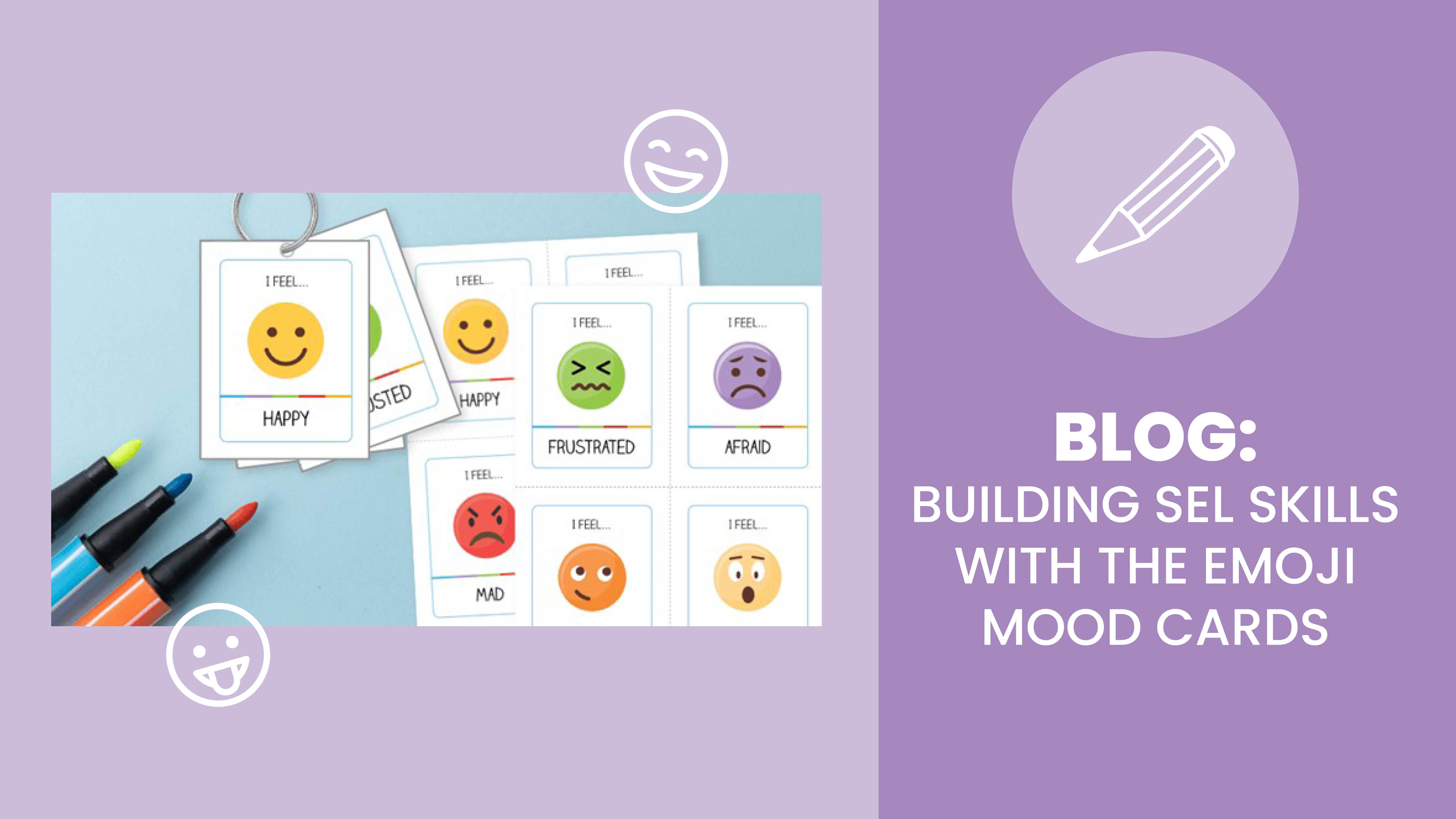Social and emotional learning (SEL), defined by CASEL, is the process through which all young people and adults acquire and apply the knowledge, skills, and attitudes to develop healthy identities, manage emotions, achieve personal and collective goals, feel, and show empathy for others, establish, and maintain supportive relationships, and make responsible and caring decisions. Kids with strong SEL skills can often experience:
- Improved academic performance
- Reduced classroom behaviors
- Increased interpersonal communication skills
Ready to get started? Check out a few fun ways you can use the Emoji Mood Cards to boost your learners’ SEL skills.
Put them in your Cozy Spot. Cozy Spots are a safe, calming, quiet space that children can go to when they need a break to self-regulate.What a perfect pair for the Emoji Mood Cards! Here's how you get started:
- Print and cut out the cards.
- Laminate them to increase their longevity and make for easier cleaning.
- Add them in with the other coping strategies and self-soothing resources in your classroom Cozy Spot.
Once they get to the Cozy Spot, learners can use the Emoji Mood Cards to discover what emotion they might be feeling and use the other included resources to self-soothe.
Use them during transitions to check-in and recognize and name feelings. During transition times throughout the day, encourage kids to do a self-check-in to reflect on their feelings and emotions. Remind them that all feelings are okay! If they want to visualize their feelings throughout the day, help them track their emotions on the Feelings and Emotions Chart.
Pull a card to learn about others’ points of view. Encourage curiosity and build empathy by helping them to recognize when others have different points of view with a quick and easy activity!
- Ask the kids to choose one card that represents how they feel in that moment and hold it up.
- Tell them to find a partner that has the same card as them. Encourage the kids to talk about what it feels like to experience that emotion.
- Tell them to find another partner that has a different card than them. Ask them to show the emotion on their card using their own facial expressions.
Giving kids a chance to talk with their friends about their feelings and emotions, in a safe and respectful way, helps them build empathy.
Practice communicating different feelings. For kids who are non-verbal or struggle with communicating their feelings, good or bad, these cards are the key! They can use the fill-in-the-blank Emoji Mood Cards to communicate their own feelings and emotions or use the other cards with an adult they trust to express how they feel. If they’re hesitant to bring up their feelings, remind them that:
- Feelings are like clouds. They come and go throughout the day.
- Understanding our emotions can help us connect with ourselves and others.
- You are always available to talk when they’re ready.
Use them to develop recognition of the feelings and emotions of peers. Pair the Emoji Mood Cards with the Find the Feeling Matching Game to help kids recognize emotions on the faces of others. Get detailed with it! Encourage kids to describe the details of the facial expressions and body language on each matching set.
- Does the child in the picture have their arms crossed?
- Are they looking toward you or looking away from you?
- What does their facial expression look like?
- Have you ever felt that way? Tell me about it.
Noticing specific details can help your students recognize emotions in the real world and teach them that other people around them may have different feelings than they do. Recognizing the feelings and thoughts of yourself and others is important to developing empathy.
Build and encourage critical thinking skills. When kids get familiar with regular emotional check-ins, encourage them to think a little deeper about their feelings with more specific questions.
- What happened to make you feel the way you do?
- What does your body feel like when you feel that way?
- What can you do to feel better when you feel upset or overwhelmed?
It’s important to be able to identify the feelings they experience, but asking more detailed questions will encourage them to notice how the choices they make and the experiences they have impact their feelings.
If kids are experiencing overwhelming feelings and emotions, providing them with helpful tools and time to self-regulate is vital to their emotional intelligence. Research suggests that the best way for kids to learn how to regulate their emotions is to practice when emotions are not heightened.
Ready for More? You Might Also Like:
Easy Ways to Incorporate Social and Emotional Learning (SEL) into Your Classroom
Kids Coping Strategies Poster Pack
Mindful Moments: 20 Printable Mindfulness Activities for Kids


